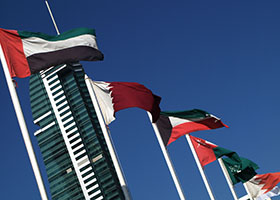


There’s $3.8 trillion in SWFs narrowly defined, and another $6.5 trillion in other sovereign investment vehicles. SWF assets are expected to grow to $5.5 trillion by the end of 2012.
How influential those investments will be remains to be seen. In the second half of 2008, SWFs pulled back from foreign investing, returning in strength only in the second half of 2009. and instead of favouring financial services, which accounted for 45% of investments at the beginning of the decade and then swelled up to 75% in 2008, they diversified into infrastructure, industry – energy and metals – hedge funds and private equity. Investments made in the big banks are underwater to the tune of 10% to 90% (that would be Citigroup).
SWFs represent a growing source of assets funded either by revenues from commodities such as oil, or by foreign exchange and pension reserves. Norway and Middle Eastern states are major players in the first category; China and many Asian countries in the second. Intriguingly, commodity SWFs have a declining share of the market, while between them, China and Japan have 45% of the world’s foreign exchange reserves.
